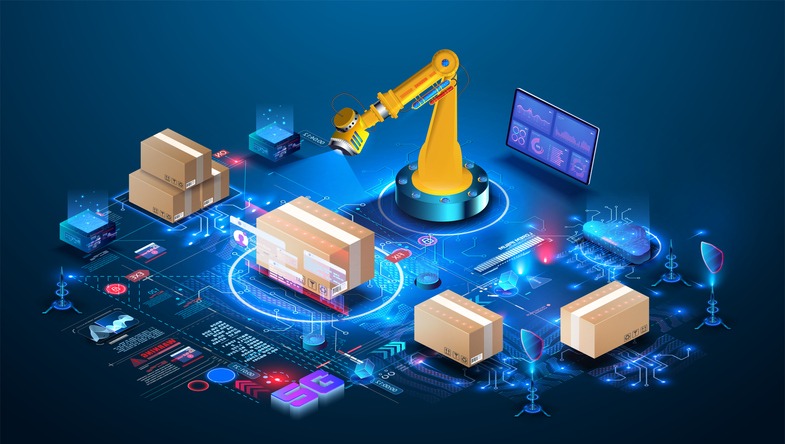In the dynamic world of global trade, reducing logistics costs has become a top priority for businesses aiming to enhance efficiency and competitiveness. The advent of new technologies is revolutionizing the logistics sector, offering innovative solutions to cut costs and streamline operations. Here are the key technological advancements that are helping businesses reduce logistics costs in 2024.
Artificial Intelligence (AI) and Machine Learning
Artificial intelligence (AI) and machine learning are at the forefront of technological advancements in logistics. These technologies enable companies to optimize their supply chain operations, predict demand, and manage inventory more effectively.
Predictive Analytics: AI-driven predictive analytics helps companies forecast demand with greater accuracy, reducing overstock and stockouts. This optimization minimizes storage costs and ensures timely delivery.
Route Optimization: AI algorithms can analyze traffic patterns, weather conditions, and delivery schedules to determine the most efficient routes for transportation. This reduces fuel consumption and delivery times, leading to significant cost savings.
Internet of Things (IoT)
The Internet of Things (IoT) is transforming logistics by providing real-time visibility into the supply chain. IoT devices, such as sensors and GPS trackers, offer valuable data that enhances decision-making and operational efficiency.
Real-Time Tracking: IoT-enabled tracking systems provide real-time updates on the location and condition of goods. This visibility helps prevent delays and damages, ensuring that products reach their destination on time and in good condition.
Asset Management: IoT devices can monitor the usage and maintenance needs of logistics equipment, such as trucks and containers. This proactive approach to asset management reduces downtime and maintenance costs.
Autonomous Vehicles and Drones
Autonomous vehicles and drones are emerging as game-changers in the logistics industry. These technologies promise to reduce labor costs, enhance delivery speed, and improve safety.
Self-Driving Trucks: Autonomous trucks can operate around the clock without the need for rest breaks, increasing efficiency and reducing labor costs. They also offer potential fuel savings through more consistent and optimized driving patterns.
Delivery Drones: Drones are being used for last-mile delivery, especially in hard-to-reach areas. They can deliver packages quickly and efficiently, reducing the need for extensive human labor and cutting down on delivery times.
Blockchain Technology
Blockchain technology offers a secure and transparent way to manage logistics transactions and supply chain data. Its decentralized nature ensures data integrity and reduces the risk of fraud.
Smart Contracts: Blockchain enables the use of smart contracts, which automatically execute and enforce the terms of an agreement. This reduces administrative costs and speeds up transaction processes.
Traceability and Transparency: Blockchain provides an immutable record of every transaction in the supply chain. This transparency helps in tracking the origin and movement of goods, enhancing trust and reducing compliance costs.
Robotics and Automation
Robotics and automation are revolutionizing warehouse operations, leading to significant cost savings and efficiency gains.
Automated Warehouses: Robotic systems can handle tasks such as picking, packing, and sorting with high precision and speed. This reduces labor costs and minimizes errors, leading to more efficient warehouse operations.
Automated Guided Vehicles (AGVs): AGVs are used to transport goods within warehouses and distribution centers. These vehicles operate autonomously, reducing the need for manual labor and enhancing operational efficiency.
Cloud Computing and Big Data
Cloud computing and big data analytics are empowering logistics companies with the ability to process and analyze vast amounts of data, leading to more informed decision-making and cost reductions.
Data-Driven Insights: Big data analytics helps companies identify patterns and trends in their logistics operations. These insights enable more strategic decision-making, optimizing everything from inventory management to transportation planning.
Scalable Solutions: Cloud-based logistics platforms offer scalable solutions that can be easily adapted to meet the changing needs of businesses. This flexibility reduces IT infrastructure costs and enhances operational agility.
The integration of new technology is transforming the logistics industry, offering innovative ways for reducing logistics costs with new technology in 2024. From AI and IoT to blockchain and autonomous vehicles, these advancements are helping businesses navigate the complexities of global trade more effectively.
By leveraging these technologies, companies can achieve significant cost savings, improve delivery times, and enhance overall supply chain performance. Staying ahead in the competitive logistics landscape requires continuous investment in technology and a proactive approach to adopting new solutions.

 English
English Tiếng Việt
Tiếng Việt العربية
العربية हिन्दी
हिन्दी Español
Español